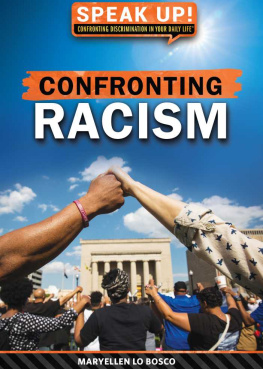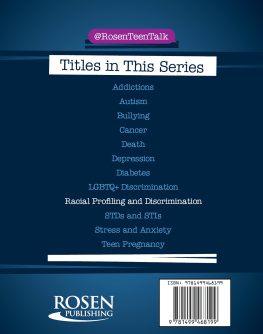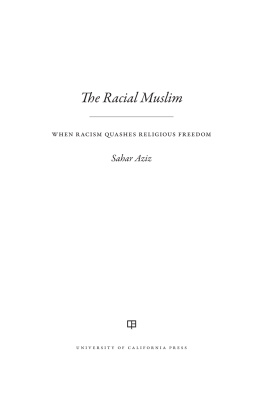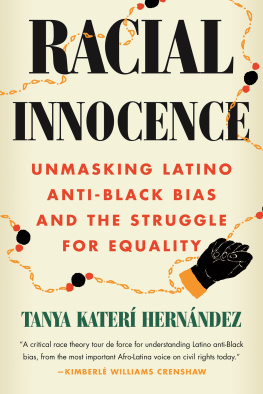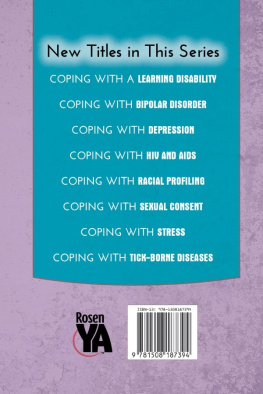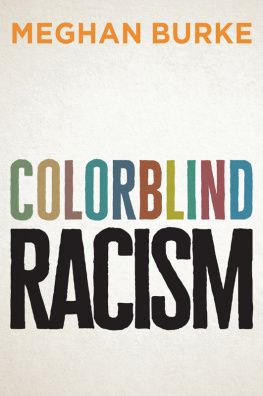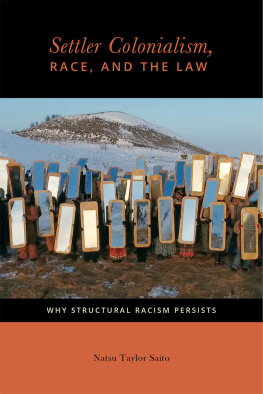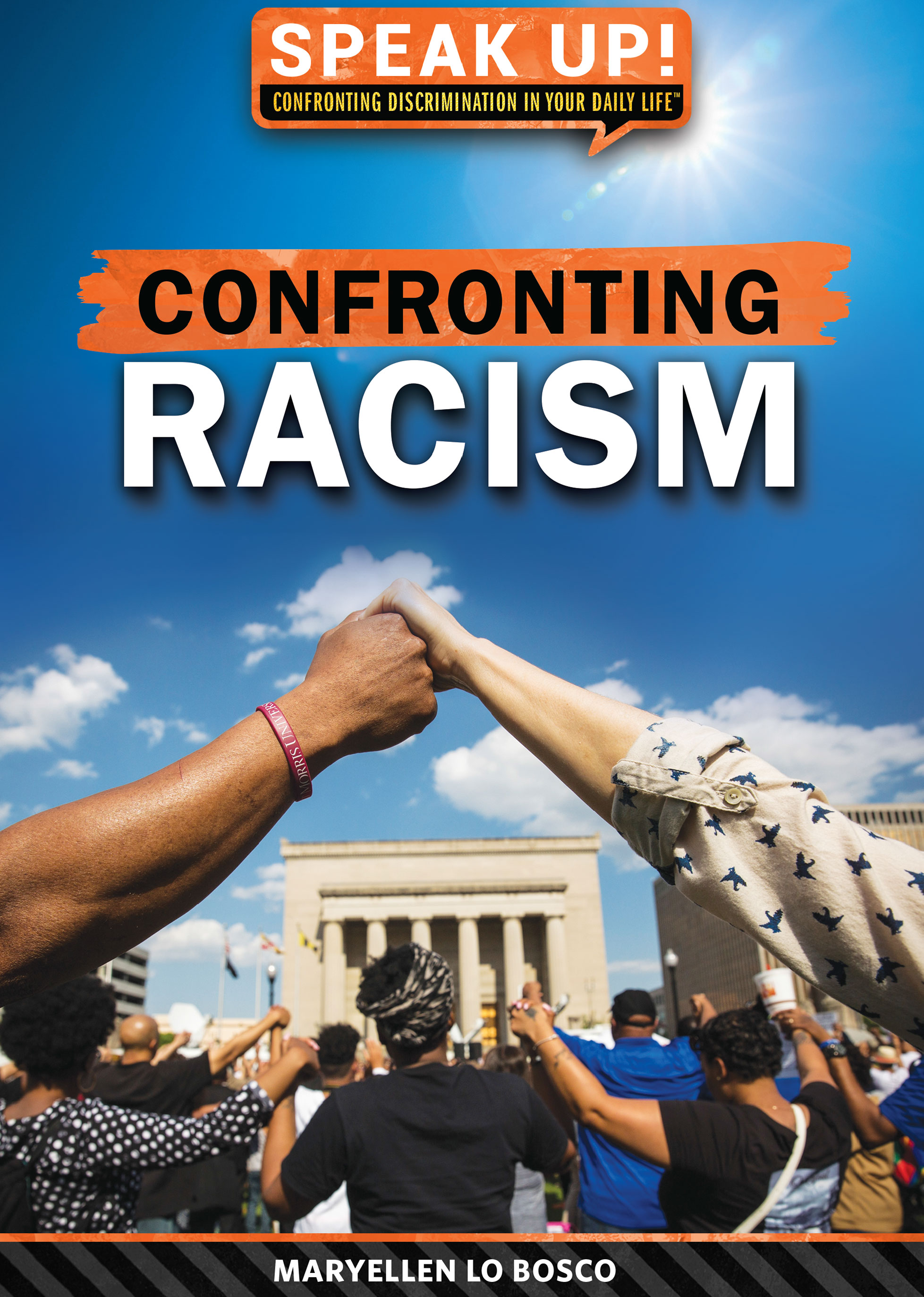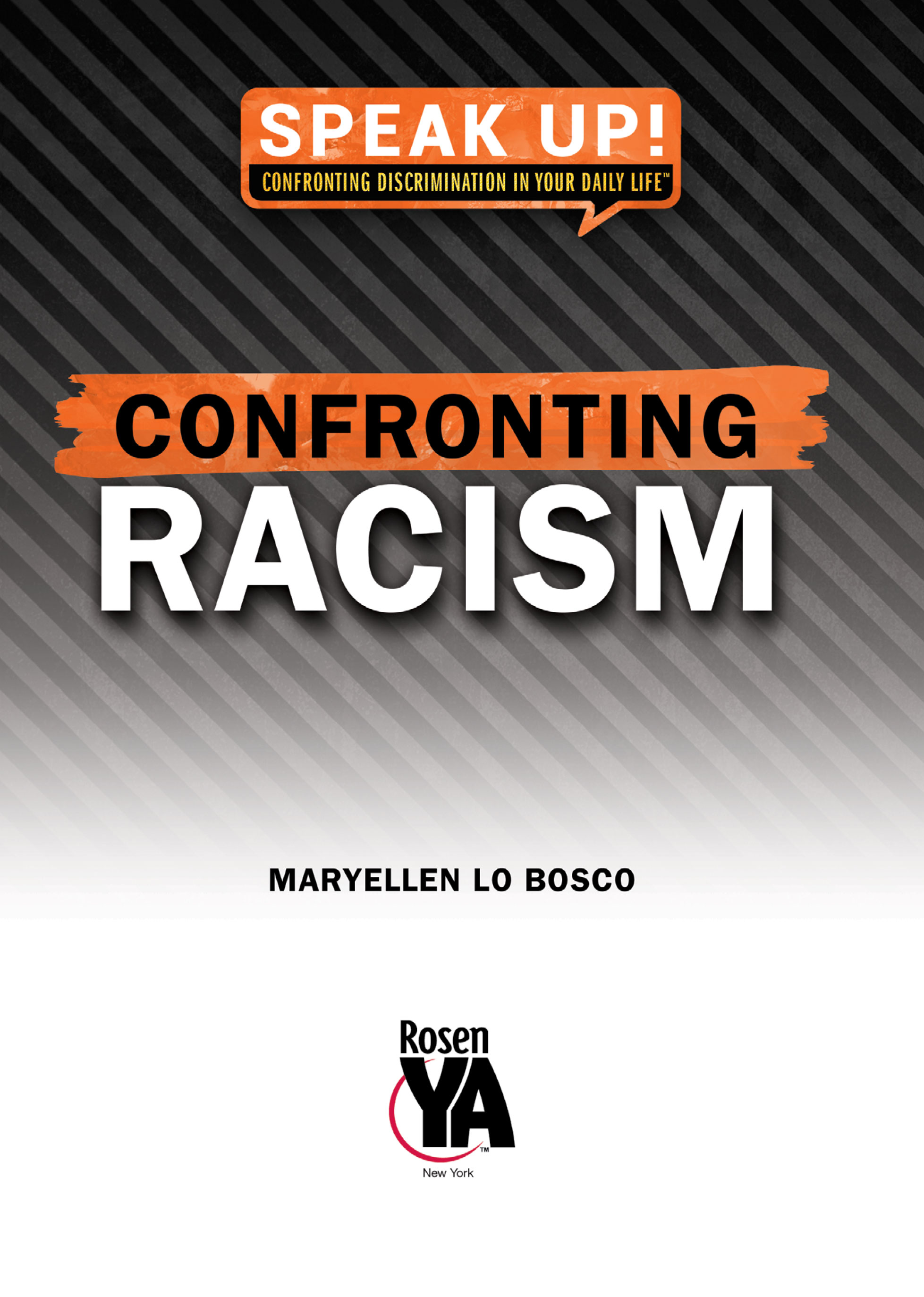- CHAPTER ONE:
A BRIEF HISTORY OF RACISM - CHAPTER TWO:
THE STRUGGLE FOR CIVIL RIGHTS AND RACIALEQUALITY IN THE UNITED STATES - CHAPTER THREE:
LEGAL PROTECTIONS AGAINSTRACIAL DISCRIMINATION - CHAPTER FOUR:
SPOTTING AND ADDRESSING OVERTRACIAL DISCRIMINATION - CHAPTER FIVE:
SPOTTING AND ADDRESSING COVERTDISCRIMINATION IN THE CLASSROOM - CHAPTER SIX:
STAYING HEALTHY IN A WORLD THATIS NOT POSTRACIAL
Published in 2018 by The Rosen Publishing Group, Inc. 29 East 21st Street, New York, NY 10010
Copyright 2018 by The Rosen Publishing Group, Inc.
First Edition
All rights reserved. No part of this book may be reproduced in any form without permission in writing from the publisher, except by a reviewer.
Library of Congress Cataloging-in-Publication Data
Names: Lo Bosco, Maryellen, author.
Title: Confronting racism / Maryellen Lo Bosco.
Description: New York, NY: Rosen Publishing Group, Inc., 2018. | Series: Speak up! Confronting discrimination in your daily life | Includes bibliographical references and index. | Audience: Grades 7-12.
Identifiers: LCCN 2017022754| ISBN 9781538381786 (library bound) | ISBN 9781538381762 (pbk.) | ISBN 9781538381779 (6 pack)
Subjects: LCSH: Race discriminationUnited States Juvenile literature. | RacismUnited StatesJuvenile literature. | United StatesRace relationsJuvenile literature.
Classification: LCC E184.A1 B67 2018 | DDC 305.800973 dc23
LC record available at https://lccn.loc.gov/2017022754 Manufactured in the United States of America
CHAPTER ONE:
A BRIEF HISTORY OF RACISM
CHAPTER TWO:
THE STRUGGLE FOR CIVIL RIGHTS AND RACIALEQUALITY IN THE UNITED STATES
CHAPTER THREE:
LEGAL PROTECTIONS AGAINSTRACIAL DISCRIMINATION
CHAPTER FOUR:
SPOTTING AND ADDRESSING OVERTRACIAL DISCRIMINATION
CHAPTER FIVE:
SPOTTING AND ADDRESSING COVERTDISCRIMINATION IN THE CLASSROOM
CHAPTER SIX:
STAYING HEALTHY IN A WORLD THATIS NOT POSTRACIAL
INTRODUCTION
R acismor, the hatred and mistreatment of one race by anotheris an age-old problem and a phenomenon that has occurred in different guises, in many cultures the world over, back to ancient history. One form of racism is xenophobia, which is the fear and hatred of foreigners or strangers.
According to evolutionary biologists, xenophobia has its origin in the behavior of territorial males. Aggression toward strangers has been observed in chimpanzees, one of two of our closest primate relatives. The other bonobosresolve conflicts with rival groups through promiscuous sexual behavior. Human beings are neither chimps nor bonobos, and when it comes to xenophobia or racism, human children do not fear foreigners or recognize physical differences until they have been taught to do so.
Science, in the form of the Human Genome Project, has taught us that there is no such thing as race from the standpoint of biology, because there is so little difference in DNA between one human being and another. Scientists have reasoned that homo sapiens sapiensmodern humanscame from a small and undiversified cohort of ancestors who left Africa about sixty thousand years ago to populate the planet. And here we are.
Human beings are among the least diverse of species. Current evolutionary theory holds that the planet was populated by a small group of modern humans migrating out of Africa some sixty thousand years ago. On the level of DNA (pictured here), we are 99.5 percent the same.
While race may not be founded in scientific fact, it is real from a social and cultural perspectiveand in turn, racism is very real. In the United States, racism continues to be a pervasive and difficult problem and one that is inextricably woven into our history. From Americas beginnings in 1619, Europeans brought African slaves to these shores to use mostly as agricultural laborers; as the country grew, so did the slave population. Although slavery was not new in the world, Americas linkage of slavery and racism was particularly pernicious. Americans concluded that it was permissible to hold black people in bondage because they were not human in the way that white people were. This rationalization for slavery became necessary in a country that established itself on Enlightenment principles and the idea that all men are created equal ... and endowed by their creator with certain inalienable rights ... among [them] life, liberty, and the pursuit of happiness.
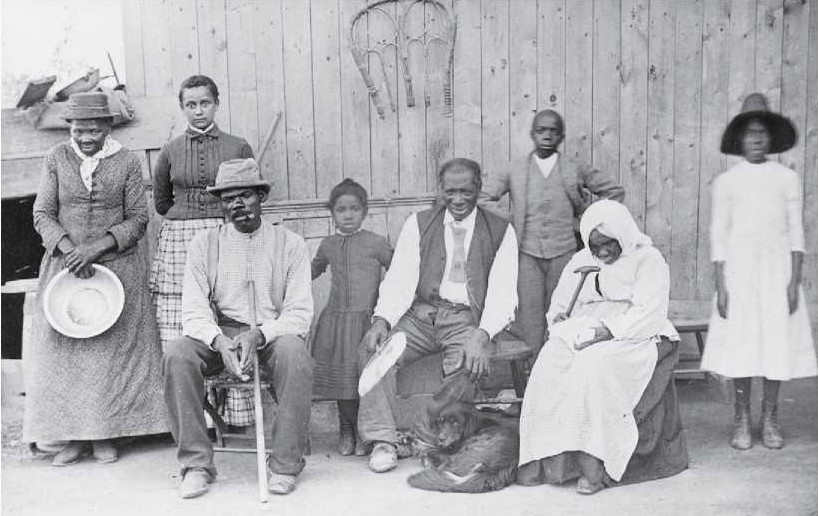
Harriet Tubman (far left) was a resistance fighter and key figure in the Underground Railroad, a network of abolitionists who helped slaves in the South escape to freedom prior to the Civil War.
The United States tried to right the wrong of slavery by fighting a bloody Civil War, but it was not enough to root out racist ideas in the North or the South. Particularly in the South, segregation of blacks and whites became institutionalized over a period of approximately one hundred years between the Civil War and the civil rights movement of the 1950s and 1960s, which culminated in legal equality for African Americans and other minority groups across the United States.
In the last sixty years, the country has made great attempts to change racial attitudes and become more socially just. Nonetheless, we have far to go.
There is still pervasive racism in our society that people of color must deal with on a regular basis. It is everyones responsibility to look racism straight in the eye and take measures to create a just world and a more perfect union. As Martin Luther King Jr. said, Injustice anywhere is a threat to justice everywhere. There is no room for racism in America, and people of all colors need to show it the door.
R acism is the belief that people belong to different races and that, as a result, they have different capacities, temperaments, and limitations. Racism holds that ones own race is superior to all others. Racial discrimination is the differential treatment of people according to their perceived racial differences and implies favoring people of ones own race over all others.
The idea that human beings belong to different races has no basis in science; in fact, race is a social and political construct. The assignment of race is based on physical characteristicsprimarily skin color, but also eye color, bone structure, and the color and texture of ones hair, as well as geographical origin. Some historians say that racism is fairly new in the world, created over the four centuries in which Europeans established racist regimes in Africa, Asia, and the Americas. However, earlier forms of xenophobia (fear or hatred of foreigners) were not so different from racism. For example, both the ancient Greeks and Chinese referred to outsiders as barbarians. While this term did not reference a specified race, it was a derogatory name for people who were other and considered to be inferior to the in-group. Islamic scholars expressed racist views against sub-Saharan Africans in some of their medieval writings, and Jews were persecuted in Europe for two millennia because of their otherness.

